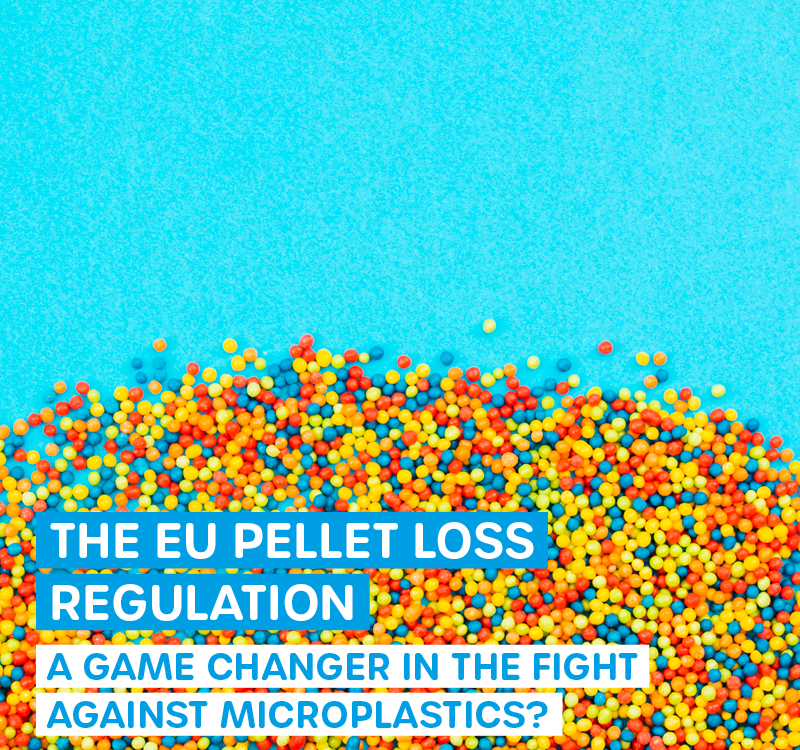
Microplastic mapping at the Ocean Race Europe
1. August 2025
The tire wear myth
6. August 2025The invisible danger: How contact lenses contribute to microplastic pollution of our waters
Millions of people around the world wear contact lenses every day - a practical alternative to glasses that allows us to see clearly without a visible visual aid. But what most people don't know: These small plastic lenses could become an underestimated environmental problem. Researchers have discovered that contact lenses contribute to microplastic pollution in our waters in two ways.
The problem starts in the drain
The first and more obvious problem lies in the incorrect disposal of used contact lenses. Many wearers carelessly dispose of their lenses down the sink or toilet instead of putting them properly in the residual waste. However, these seemingly harmless plastic disks survive the journey through the sewage system and wastewater treatment plants.
Once in the wastewater treatment plants, the contact lenses are decomposed by bacteria. This changes their soft surface – they break up and eventually disintegrate into microplastics. These tiny particles are so small that they cannot be completely removed in wastewater treatment plants and enter the environment with the sewage sludge or treated wastewater - directly into our rivers, lakes and ultimately the oceans.
Become a water specialist and support our water monitoring.
Microplastics directly from the eye
But the problem goes even further: new research findings show that contact lenses release microplastic particles while they are being worn. Researchers at Nanjing University in China have discovered that plastic lenses can shed up to 90,000 microplastic particles per year when worn for ten hours a day. These tiny particles enter the wearer's body directly via the eye.
The role of sunlight is particularly worrying: UV radiation accelerates the decomposition process of contact lenses and therefore increases the release of microplastic particles. What is intended as a practical visual aid thus becomes a direct source of microplastic pollution in our bodies.
The scale of the problem
The figures are alarming: according to estimates, between 44 and 110 tons of contact lenses are disposed of improperly every year in the USA alone. This corresponds to around 3.36 billion contact lenses that find their way into the sewage system and from there into the waterways. If you multiply these figures by the global use of contact lenses, the scale of the problem becomes clear.
Microplastics in bodies of water are particularly problematic as they:
- Are ingested by marine animals and fish
- Enter the food chain
- Bind and concentrate pollutants
- Are practically indestructible and accumulate in the environment over decades
What can contact lens wearers do?
The good news is that every contact lens wearer can easily contribute to the solution:
Proper disposal: Used contact lenses belong in the residual waste, never down the drain or toilet. Many manufacturers now also offer recycling programs for their products.
Conscious product choice: When choosing new contact lenses, you can focus on manufacturers that are actively committed to sustainability and use more environmentally friendly materials.
Longer wearing time: Monthly or annual lenses significantly reduce the amount of waste compared to daily lenses - provided they are suitable for individual use.
The industry's responsibility
The contact lens industry also has a role to play. Developments in the direction of biodegradable materials or lenses with reduced microplastic release could alleviate the problem in the long term. At the same time, manufacturers must provide their customers with better information about correct disposal.
Conclusion: Small lenses, big impact
Contact lenses may be tiny, but their environmental impact is not. As a previously overlooked source of microplastics in our waters, they deserve our attention. With the right awareness and behavior, millions of contact lens wearers worldwide can help reduce this form of pollution.
The solution is not to stop wearing contact lenses, but to use and dispose of them responsibly. Because in the end, it's often the small, everyday decisions that make the biggest difference to our environment.
Did you find this article interesting? Then support our educational and awareness-raising work with a donation and find out more in our other blog posts.






